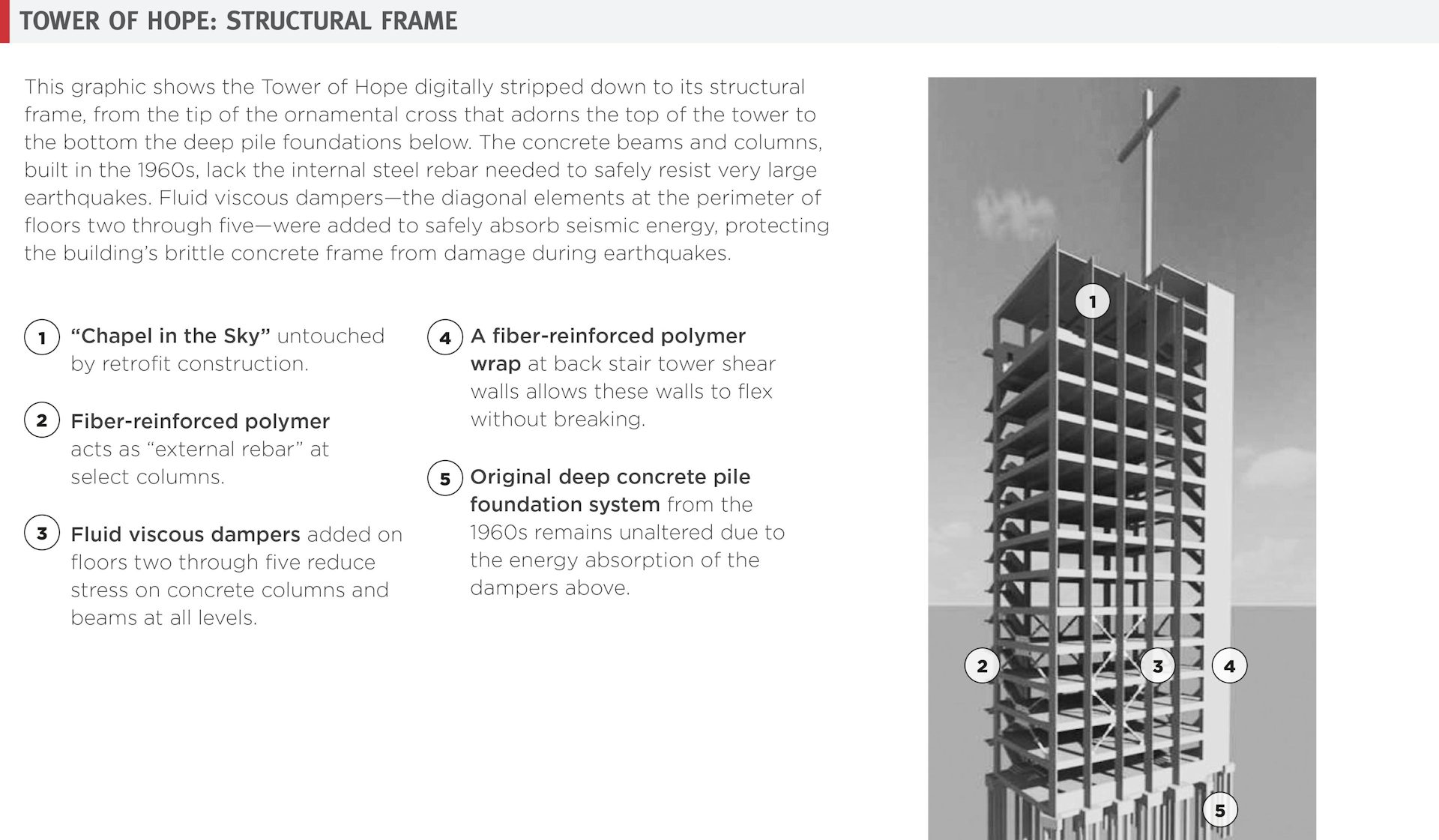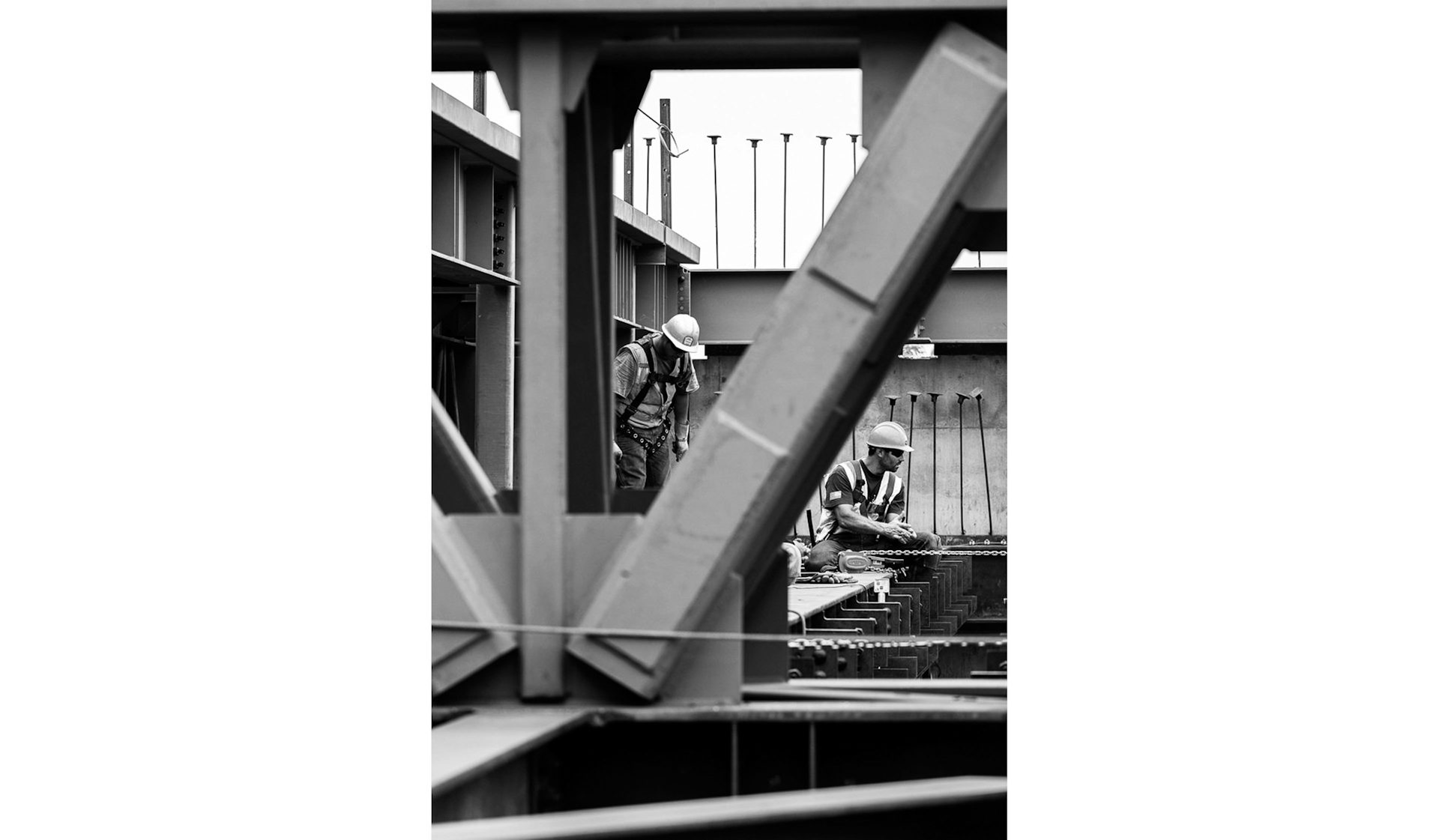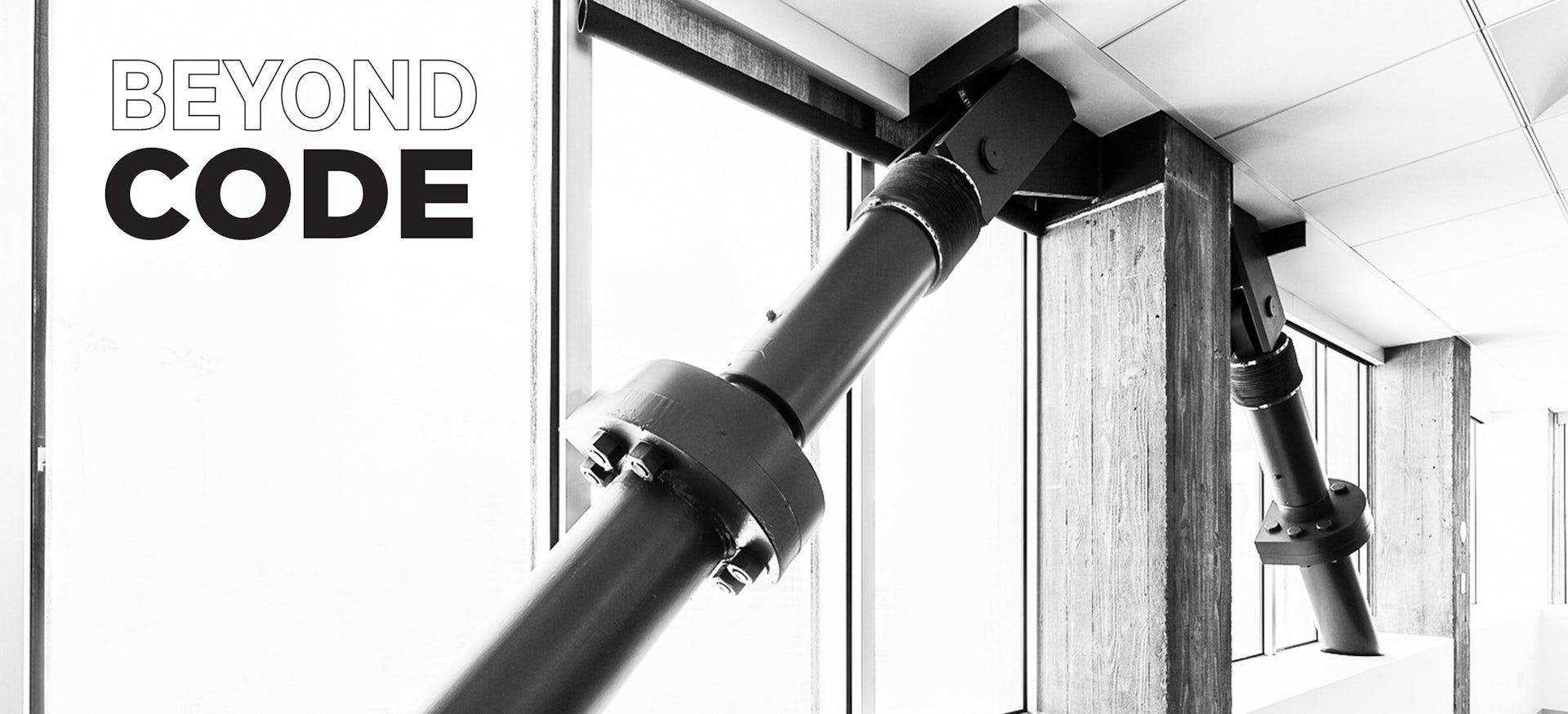When it comes to natural and manmade disasters, good structural design can often be a matter of life and death. But what happens to buildings after the disaster passes, and the long and often messy task of getting back to business as usual begins?
In most parts of the country, building codes focus on life safety; for most buildings no attention is paid to whether buildings will be reusable after a disaster. With seismic activity a constant concern and climate change increasingly bringing unpredictable and more destructive weather-related disruptions, well-researched building design strategies must go beyond code and aim for true resilience.
Designing for resilience should focus on the ability to recover quickly after an event, rather than simply on the ability to withstand disruptions, says LPA Director of Structural Engineering Bryan Seamer. The approach offers clients a way of delivering better-performing and longer-life projects, taking a long-term view toward the maintenance and care of their buildings.
Beyond Code
Designing for disasters is not simply about survival. Smart structural design can make recovery easier and extend the life of the building.

“Resilience is not simply about preparing for a disaster,” Seamer says. “It’s about recovering more quickly from a disaster, both economically and functionally.”
In California, earthquakes are an everyday threat, and building codes are designed to allow people to get out safely. But the codes pay little attention to the post-earthquake functionality of most buildings. The structural process can move beyond the safety-only approach to explore different aspects of how a building responds to an earthquake.
“Recent advances in the science of seismic engineering allow us to predict building performance in terms of not only safety but also downtime and repair costs,” Seamer says.
In 2014, when LPA retrofitted the Richard Neutra-designed Tower of Hope complex in the city of Garden Grove, the design team took the opportunity to completely rethink the 250-foot-tall tower’s structure. Built of cast-in-place and post-tensioned concrete structural systems, the tower, completed in 1968, was woefully under-designed from a seismic perspective. However, any retrofit would have to pay careful attention to the building’s historical significance.
Recent advances in the science of seismic engineering allow us to predict building performance in terms of not only safety but also downtime and repair costs, Seamer says.

A conventional seismic upgrade for this type of structure would have included added concrete shear walls within the tower and the addition of a new foundation to help stabilize and anchor the mass. However, this elaborate and costly approach was impractical in terms of budget, historic integrity and site configuration. Instead, LPA designers opted to supplement the existing concrete elements with X-shaped fluid viscous dampers installed on four consecutive levels near the base of the tower.
The dampers are made of sleeved sections containing steel pistons that allow the pieces to slide during an earthquake, thereby dissipating the energy produced by the tremor. The greater the magnitude, the farther the pieces slide. Unlike traditional concrete shear walls, which improve safety alone, dampers enhance safety and reduce damage to building contents.
The resiliency approach is not only pertinent for retrofit projects, which often legally require building owners to upgrade their buildings to current standards or higher. Increasingly, resiliency planning is helping to guide design from the onset of new-build projects above and beyond existing standards. “Recovering from a disruption is just as relevant for new construction as for retrofit,” Seamer says.
On an expansion project for a medical device maker, the campus buildings are designed for safety, as well as recovery time. The moment frame office building is designed to withstand 25 percent higher seismic forces than the building code, and the drift (horizontal) movement was limited to reduce damages due to “swaying” of the building during a major earthquake. Large swaying causes damage to interior elements, such as partitions, ceilings and furnishings, as well as the building’s glass curtain wall, increasing time and costs associated with the recovery.
“Our own study found this combination of increasing the design load by 25 percent and lowering drift limit results in an optimal recovery time after an earthquake,” says LPA Director of Structural Engineering Daniel Wang.
A comprehensive resiliency design approach includes considerations of climate change, which in many cases means a focus on preventing and coping with the effects of flooding. On a project for a digital computing-focused financial analyst in Orange County, California, the design anticipates flash flooding due to high-volume storm events. Here, the design team placed critical building infrastructure, including back-up generators and vital servers, on the second floor of the building, above a semi-subterranean parking structure that is designed to flood, if necessary. LPA is deploying this strategy, of creating floodable ground-level areas, across a variety of projects, including in Texas, where flooding and hurricanes pose potential problems for building owners.

Resilience is not simply about preparing for a disaster, Seamer says. It’s about recovering from a disaster economically and functionally more quickly.
The recently opened Menchaca Elementary School in Austin, Texas, is designed with flood-proofing at its core. Instead of conventional parapet flat roofs with interior-collecting gutters, the designers deployed pitched roofs with deep-set overhanging eaves and oversized downspouts that collect and funnel water away from the building, says Jim Oppelt, Project Architect in LPA’s San Antonio studio. The approach is matched by drought-tolerant native landscaping designed to help catch and channel flash-flood waters. In addition, the bottom two feet of the first floor of each building on the campus are outfitted with mold- and mildew-resistant drywall, another flood-proofing strategy that anticipates a worst-case scenario.
In Texas, building codes require exterior walls that can withstand high-speed impacts from projectiles launched through the air during tornado and hurricane events. Projectile testing determines the composition of exterior cladding materials as well as the thickness of the walls themselves. In the case of the Pleasanton Elementary School, the exterior walls are made of metal panels and brick to withstand storms, while also making the walls easier to repair, if necessary

In addition to businesses and schools, local governments are also recognizing the need for higher-performance public facilities, including tactical emergency response facilities like hospitals, police stations and city halls, which will provide critical services in the wake of an event. “For critical facilities like emergency operations centers, which are often located in city halls, it is important that buildings remain online in the immediate aftermath of an emergency,” Wang explains.
The Laguna Niguel City Hall, a 40,000-square-foot, Spanish-style building, was designed in 2011 to remain operational in the aftermath of an earthquake or other natural disaster. The design includes solar panel-powered back-up generators and a collection of highly engineered command-and-control spaces that will turn the building into a disaster recovery nerve center for the surrounding city following a disruption, Wang says.
The shift from sustainability to resilience is one that is sure to become more prevalent in coming years. In California, for example, there is a movement to transition the California Building Code from a Life Safety standard to a Functional Recovery standard. This shift is likely to play out in other state and local municipalities.“This movement is just getting started but would be a sea change in the way we design buildings when it happens,” Seamer says.















